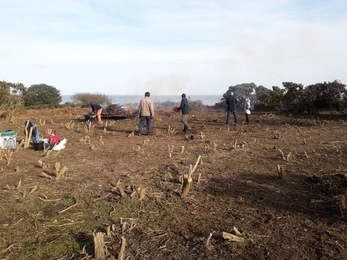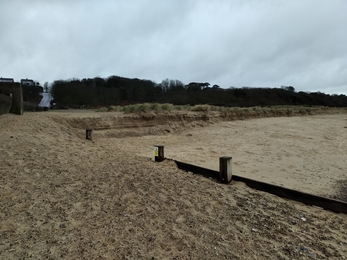Despite the wild weather, wetland bird species we didn't used to see many of are now turning up at Carlton Marshes regularly including Shelduck, Pintail and Tufted Duck. Tufted Duck are a diving duck species, which means you usually find them in deeper water diving for aquatic plants, insects, molluscs and whatever else they can find to feed on. This is the first year we’ve had enough deep water areas at Carlton Marshes to have larger numbers of these duck, with 40 counted on a recent wetland bird survey. In the last couple of months there have been high counts of other wetland bird species too including 600 Teal, 1500 Lapwing and 150 Gadwall.
Throughout winter you can easily spot large flocks of finches as they move through nature reserves and urban areas. Gunton Meadow is a great place to see large numbers of Chaffinch, Goldfinch and Greenfinch, perhaps with a few Siskin mixed in. Gunton Meadow is a great place to see Bullfinch too with a pair seen there regularly throughout the winter and breeding on the reserve. Bullfinch used to be a common garden bird in the UK but are now rarely seen in the garden and they are on the UK amber list of conservation concern. This is because their breeding population has declined by 39% in the UK since the 1960s. Seeing them in your local area is really special.
Throughout winter field margins can also be a great place to see large numbers of finches. At Oulton Marshes we sow a small area of upland with a wild bird seed mix, which provides food for birds such as Chaffinches. Throughout autumn and winter this area is full of finches and other seed eating birds. Hundreds of Reed Bunting, Linnet, Greenfinches and Goldfinches fly up as you approach. Farmers often sow these mixes, which include plants such as clovers, millets and barley, in field margins and the amount of bird life on our tiny patch at Oulton Marshes demonstrates how important field margins can be for bird populations.







